
How to Use esp32-wr00m-32 dev 1: Examples, Pinouts, and Specs
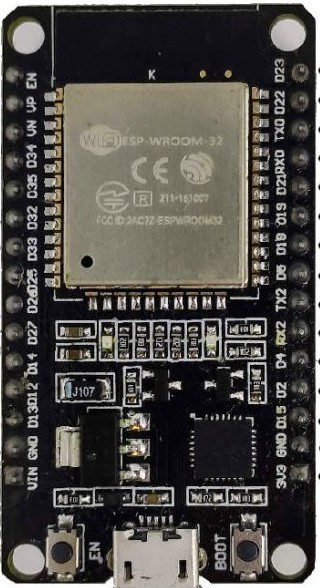
 Design with esp32-wr00m-32 dev 1 in Cirkit Designer
Design with esp32-wr00m-32 dev 1 in Cirkit DesignerIntroduction
The ESP32-WROOM-32 is a versatile Wi-Fi and Bluetooth microcontroller module designed for Internet of Things (IoT) applications. It features dual-core processing, low power consumption, and a wide range of connectivity options, making it ideal for smart devices, home automation, wearables, and industrial IoT solutions. Its compact design and robust performance allow developers to create innovative and efficient projects with ease.
Explore Projects Built with esp32-wr00m-32 dev 1
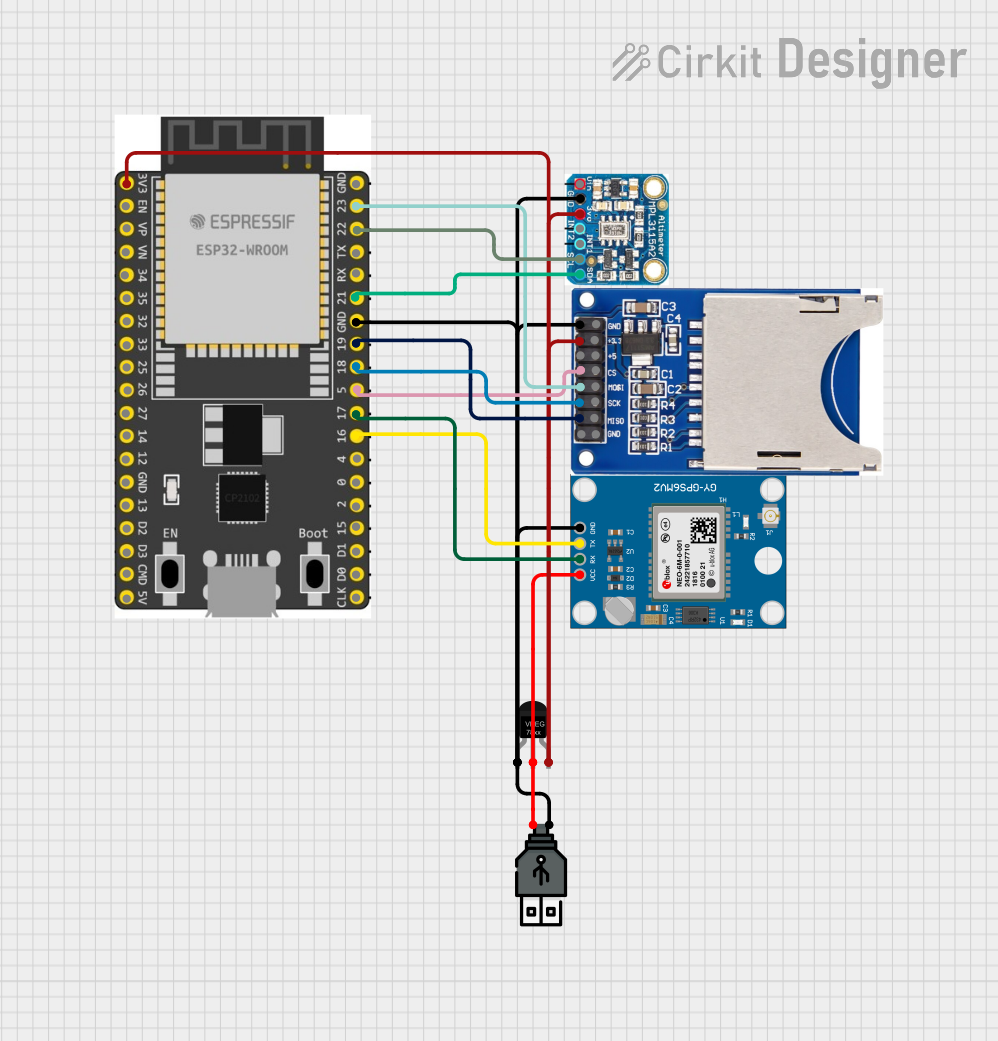
 Open Project in Cirkit Designer
Open Project in Cirkit Designer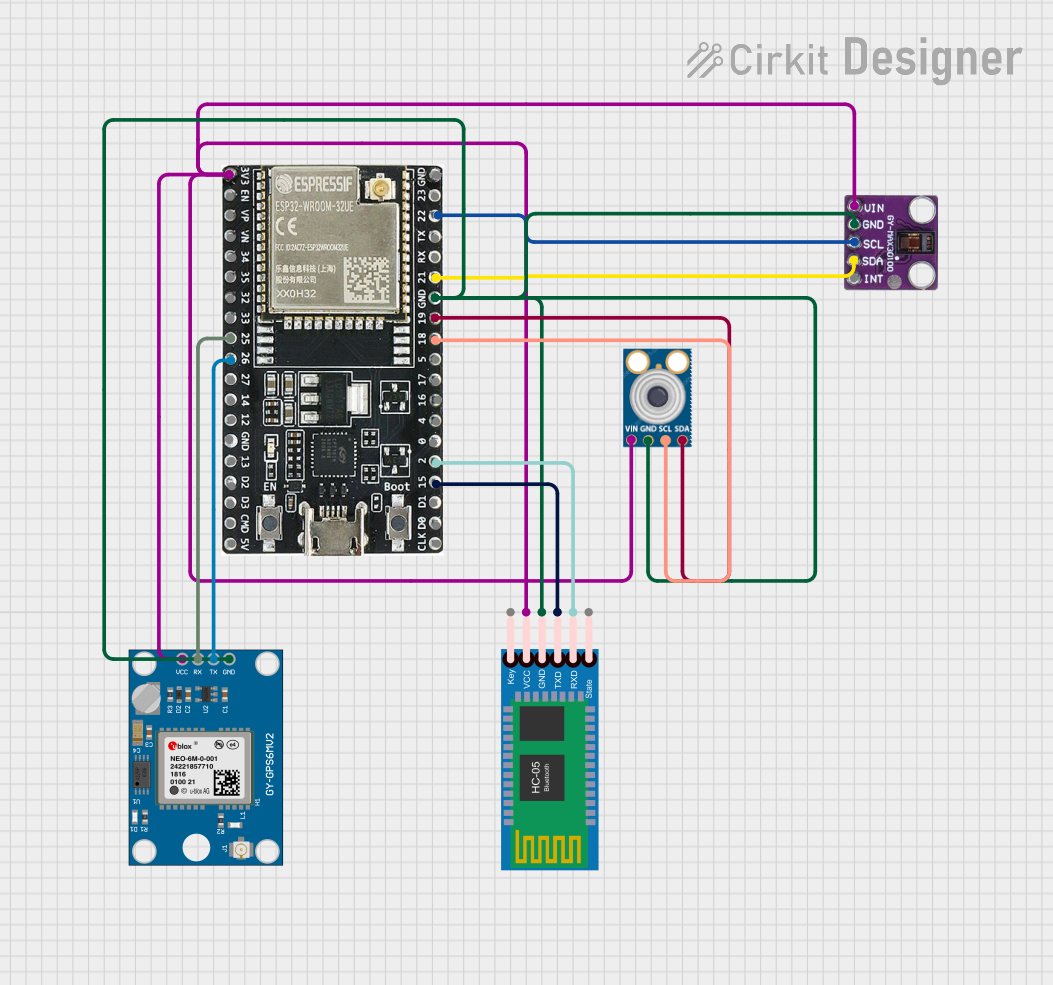
 Open Project in Cirkit Designer
Open Project in Cirkit Designer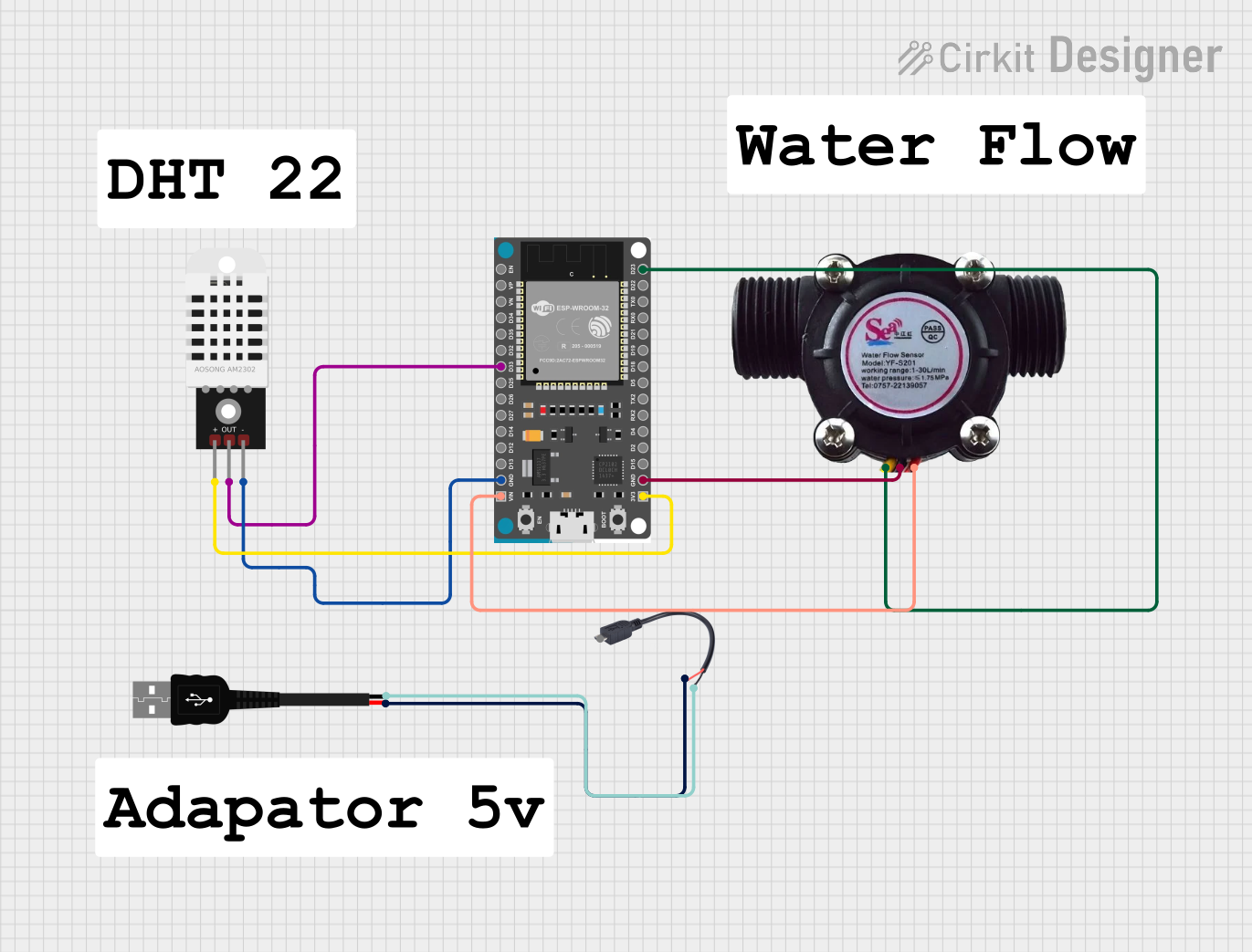
 Open Project in Cirkit Designer
Open Project in Cirkit Designer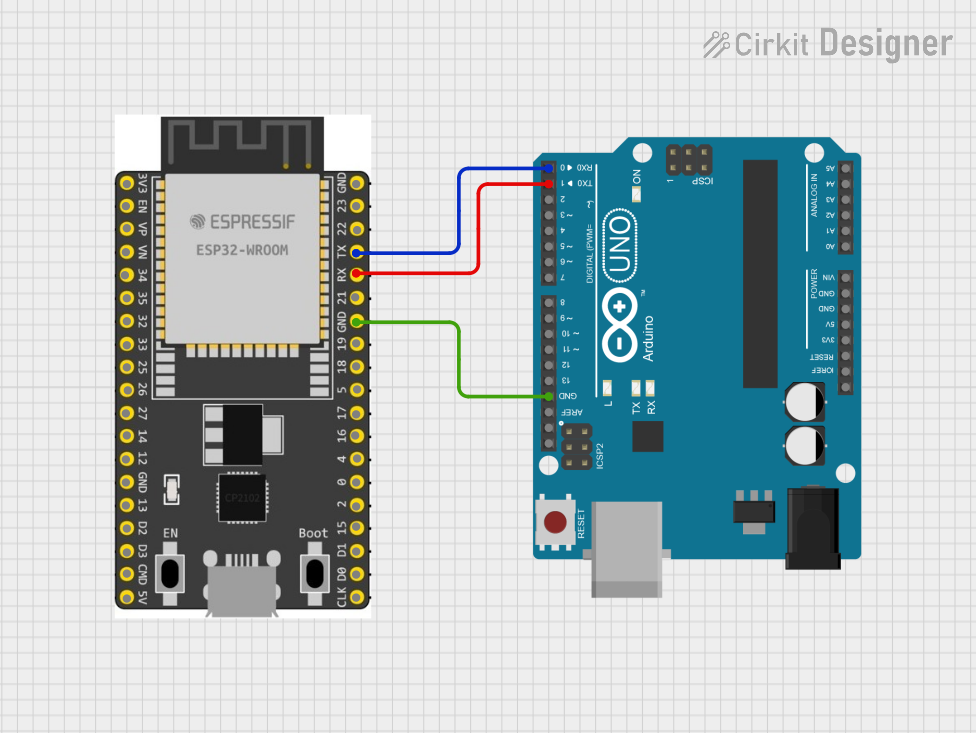
 Open Project in Cirkit Designer
Open Project in Cirkit DesignerExplore Projects Built with esp32-wr00m-32 dev 1

 Open Project in Cirkit Designer
Open Project in Cirkit Designer
 Open Project in Cirkit Designer
Open Project in Cirkit Designer
 Open Project in Cirkit Designer
Open Project in Cirkit Designer
 Open Project in Cirkit Designer
Open Project in Cirkit DesignerCommon Applications and Use Cases
- Smart home devices (e.g., smart lights, thermostats)
- Wearable technology
- Industrial IoT systems
- Wireless sensor networks
- Robotics and automation
- Real-time data monitoring and logging
Technical Specifications
The ESP32-WROOM-32 module is built around the ESP32-D0WDQ6 chip, offering a rich set of features for various applications.
Key Technical Details
| Parameter | Specification |
|---|---|
| Microcontroller | ESP32-D0WDQ6 (dual-core Xtensa LX6) |
| Clock Speed | Up to 240 MHz |
| Flash Memory | 4 MB (default) |
| SRAM | 520 KB |
| Wi-Fi Standards | 802.11 b/g/n (2.4 GHz) |
| Bluetooth | v4.2 BR/EDR and BLE |
| Operating Voltage | 3.0V to 3.6V |
| GPIO Pins | 34 |
| ADC Channels | 18 (12-bit resolution) |
| DAC Channels | 2 |
| Communication Interfaces | UART, SPI, I2C, I2S, CAN, PWM |
| Power Consumption | Ultra-low power (deep sleep: ~10 µA) |
| Operating Temperature | -40°C to +85°C |
Pin Configuration and Descriptions
The ESP32-WROOM-32 module has 38 pins. Below is a table of the most commonly used pins and their functions:
| Pin Number | Pin Name | Function Description |
|---|---|---|
| 1 | EN | Enable pin (active high) |
| 2 | GPIO0 | Boot mode selection / General-purpose IO |
| 3 | GPIO1 (TX) | UART0 Transmit |
| 4 | GPIO3 (RX) | UART0 Receive |
| 5 | GPIO2 | General-purpose IO |
| 6 | GPIO4 | General-purpose IO |
| 7 | GPIO5 | General-purpose IO |
| 8 | GPIO12 | General-purpose IO / ADC2 Channel 5 |
| 9 | GPIO13 | General-purpose IO / ADC2 Channel 4 |
| 10 | GPIO14 | General-purpose IO / ADC2 Channel 6 |
| 11 | GPIO15 | General-purpose IO / ADC2 Channel 3 |
| 12 | GPIO16 | General-purpose IO |
| 13 | GPIO17 | General-purpose IO |
| 14 | 3V3 | 3.3V Power Output |
| 15 | GND | Ground |
For a complete pinout, refer to the ESP32-WROOM-32 datasheet.
Usage Instructions
How to Use the ESP32-WROOM-32 in a Circuit
- Power Supply: Provide a stable 3.3V power supply to the module. Avoid exceeding 3.6V to prevent damage.
- Boot Mode: Connect GPIO0 to GND during power-up to enter bootloader mode for programming.
- Communication: Use UART, SPI, or I2C interfaces to communicate with other devices.
- GPIO Usage: Configure GPIO pins as input or output in your code. Be mindful of pins with special functions (e.g., ADC, DAC).
- Programming: Use the Arduino IDE or ESP-IDF (Espressif IoT Development Framework) to write and upload code.
Important Considerations and Best Practices
- Voltage Levels: Ensure all connected devices operate at 3.3V logic levels. Use level shifters if necessary.
- Deep Sleep Mode: Utilize deep sleep mode to minimize power consumption in battery-powered applications.
- Antenna Placement: Avoid placing metal objects near the onboard antenna to maintain strong Wi-Fi and Bluetooth signals.
- Pin Limitations: Some GPIO pins have restrictions (e.g., GPIO6-GPIO11 are used for flash memory and should not be used for general I/O).
Example Code for Arduino UNO
Below is an example of how to blink an LED connected to GPIO2 using the Arduino IDE:
// Define the GPIO pin for the LED
#define LED_PIN 2
void setup() {
// Set the LED pin as an output
pinMode(LED_PIN, OUTPUT);
}
void loop() {
// Turn the LED on
digitalWrite(LED_PIN, HIGH);
delay(1000); // Wait for 1 second
// Turn the LED off
digitalWrite(LED_PIN, LOW);
delay(1000); // Wait for 1 second
}
Troubleshooting and FAQs
Common Issues and Solutions
Module Not Responding
- Cause: Incorrect power supply or wiring.
- Solution: Verify that the module is receiving a stable 3.3V supply and check all connections.
Wi-Fi Connection Fails
- Cause: Weak signal or incorrect credentials.
- Solution: Ensure the module is within range of the Wi-Fi router and double-check the SSID and password.
Code Upload Fails
- Cause: Incorrect boot mode or COM port selection.
- Solution: Hold GPIO0 low during power-up to enter bootloader mode and select the correct COM port in the IDE.
GPIO Pin Not Working
- Cause: Pin conflict or incorrect configuration.
- Solution: Check if the pin is reserved for special functions and ensure it is properly configured in the code.
FAQs
Q: Can the ESP32-WROOM-32 operate on 5V?
A: No, the module operates on 3.3V. Use a voltage regulator or level shifter for 5V systems.Q: How do I reset the module?
A: Press the EN (enable) pin or connect it to GND momentarily to reset the module.Q: Can I use the ESP32-WROOM-32 for both Wi-Fi and Bluetooth simultaneously?
A: Yes, the ESP32 supports simultaneous Wi-Fi and Bluetooth operation.Q: What is the maximum range of the Wi-Fi connection?
A: The range depends on environmental factors but typically extends up to 100 meters in open space.
This documentation provides a comprehensive guide to using the ESP32-WROOM-32 module effectively. For further details, refer to the official datasheet and Espressif's documentation.